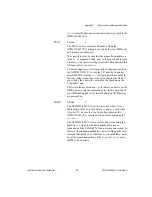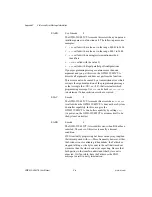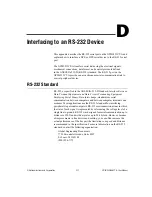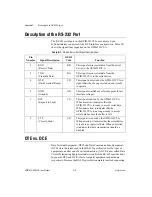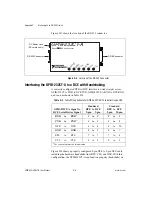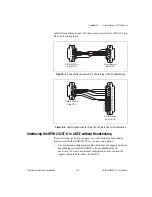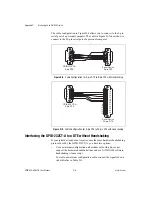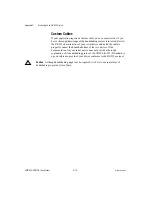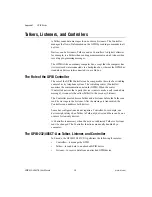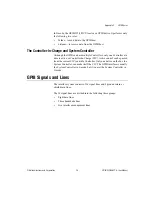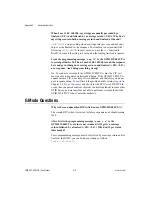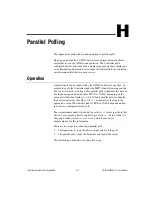
©
National Instruments Corporation
E-1
E
Interfacing to an RS-485 Device
This appendix describes the RS-485 serial port on the GPIB-485CT-A and
explains how to interface an RS-485 device to the RS-485 serial port.
The GPIB-485CT-A transfers serial data using the electrical signals defined
in the EIA-485 standard. The RS-485 port on the GPIB-485CT-A provides
an asynchronous serial communication link to a serial peripheral device.
For more information on the EIA-485 standard, contact the following
organization:
Global Engineering Documents
7730 Carondelet Avenue, Suite 4007
St. Louis, MO 63105
(800) 854-7179
RS-422
RS-422, as specified in the EIA/RS-422-A Standard, Electrical
Characteristics of Balanced Voltage Digital Interface Circuits, defines
a serial interface much like RS-232. However, RS-422 uses balanced
(or differential) transmission lines. Balanced transmission lines use
two transmission lines for each signal. The state of each signal is
represented, not by a voltage level on one line referenced to ground as in
RS-232, but rather by the relative voltage of the two lines to each other.
For example, the TX signal is carried on two wires, wire A and wire B.
A logical 1 is represented by the voltage on line A being greater than the
voltage on line B. A logical 0 is represented by the voltage on line A being
less than the voltage on line B. Differential voltage transmission creates a
signal that is much more immune to noise as well as voltage loss due to
transmission line effects. Thus, you can use RS-422 for much longer
distances (up to 4,000 ft) and much greater transmission speeds (up to
10 Mbytes/s) than RS-232.

